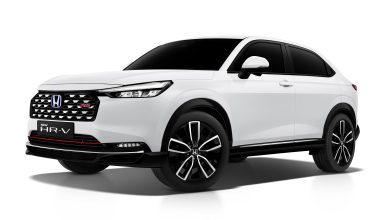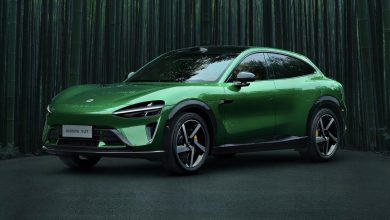Hyundai Unveils New Bayon Compact Crossover For Europe

This new Bayon is to sit alongside the Kona in the Hyundai crossover lineup over there.
Hyundai has recently revealed its new Bayon compact crossover. Sitting alongside the existing slightly-larger Kona and closely related to the i20, this new interesting-looking SUV that is designed specifically for Europe will compete against other segment rivals like the Ford Puma, Peugeot 2008 and the Toyota Yaris Cross over there.
Kicking things off first with the exterior of this new Bayon, this latest addition into the Hyundai range certainly follows on from the South Korean automaker’s recent lineup of distinct Sensuous Sportiness design direction. Starting up front, there is a distinct similarity to the recently facelifted Kona with its double-tiered slit-like LED headlights that surround that gaping front grille.
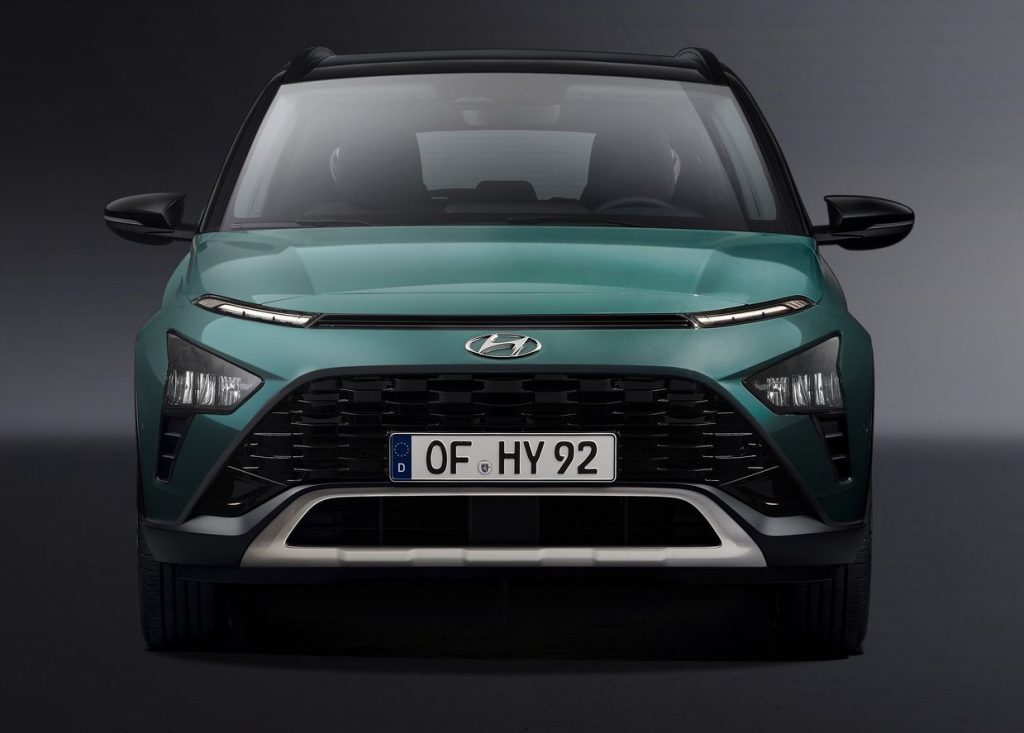
Moving down the sides meanwhile, the Bayon looks to have taken more cues here from its larger Tucson stablemate instead with those sharply creased lines along its side profile. A two-tone roof and alloy wheels of up to 17-inches in diameter gives this subcompact crossover a further touch of modernity and style.
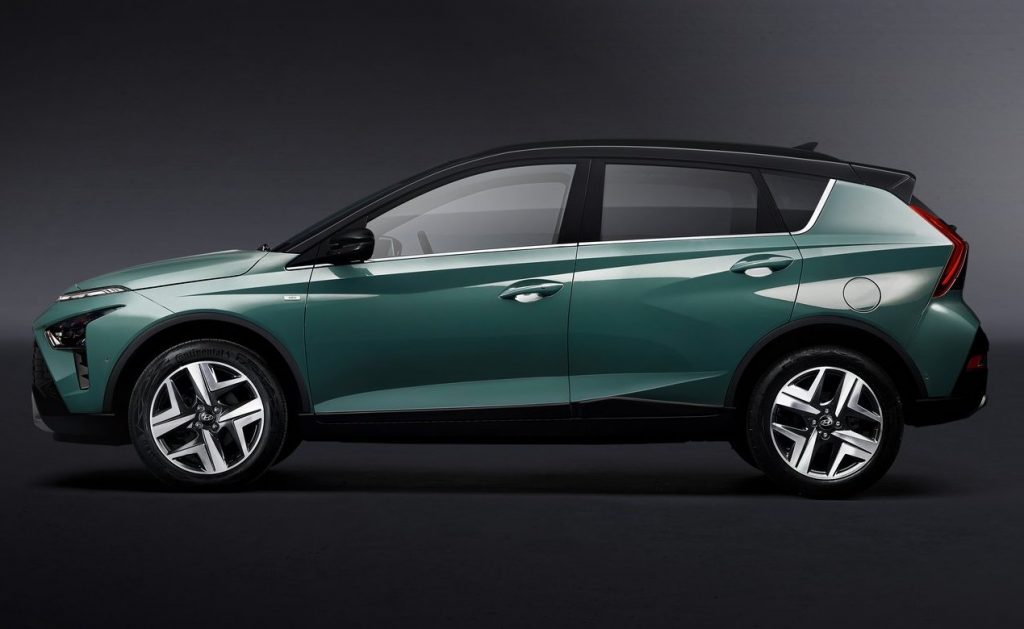
Speaking of the two-tone look, arrow-shaped LED tail lights are complemented by a gloss black accent panel on the tailgate of the Bayon. The rear of this Hyundai also features a thin horizontal line connecting the taillights, that supposedly further emphasises its width, and a chunky black plastic bumper, complete with shiny rear skid plate to give it more of that SUV-esque aesthetic.

Now much like the exterior, the interior design of the Bayon borrows heavily from the other Hyundai models. This is no bad thing though as it means that this compact crossover also gets all the tech that comes as standard in those larger South Korean cars too.
These interior tech features that are available in the Bayon include a twin 10.25-inch digital screens for the instrument cluster and central infotainment touchscreen, with standard wireless Apple CarPlay and Android Auto integration. This compact crossover also comes with a number of USB charging ports, a wireless charging pad, a BOSE sound system, an intelligent trunk cover as well as LED interior ambient lighting and Hyundai’s Bluelink connected car services.

Much like any new Hyundai too, the Bayon undoubtably comes with a boat-load of active and passive safety tech as part of its standard Hyundai SmartSense safety suite. The highlights of which include Navigation-based Smart Cruise Control (NSCC), Intelligent Speed Limit Assist (ISLA), Parking Collision-Avoidance Assist-Reverse (PCA-R) and Parking Assist (PA) that allows for semi-autonomous parking.
As for what actually drives the wheels of the Bayon, under the hood lies a range of updated Kappa MPi petrol engines and a selection of diesel T-GDi power plants. Available with or without 48 V mild-hybrid assistance, these 1.0-litre oil burners are to be mated to either a 7-speed dual-clutch transmission or Hyundai’s 6-speed Intelligent Manual Transmission (iMT) with Rev Matching built-in.
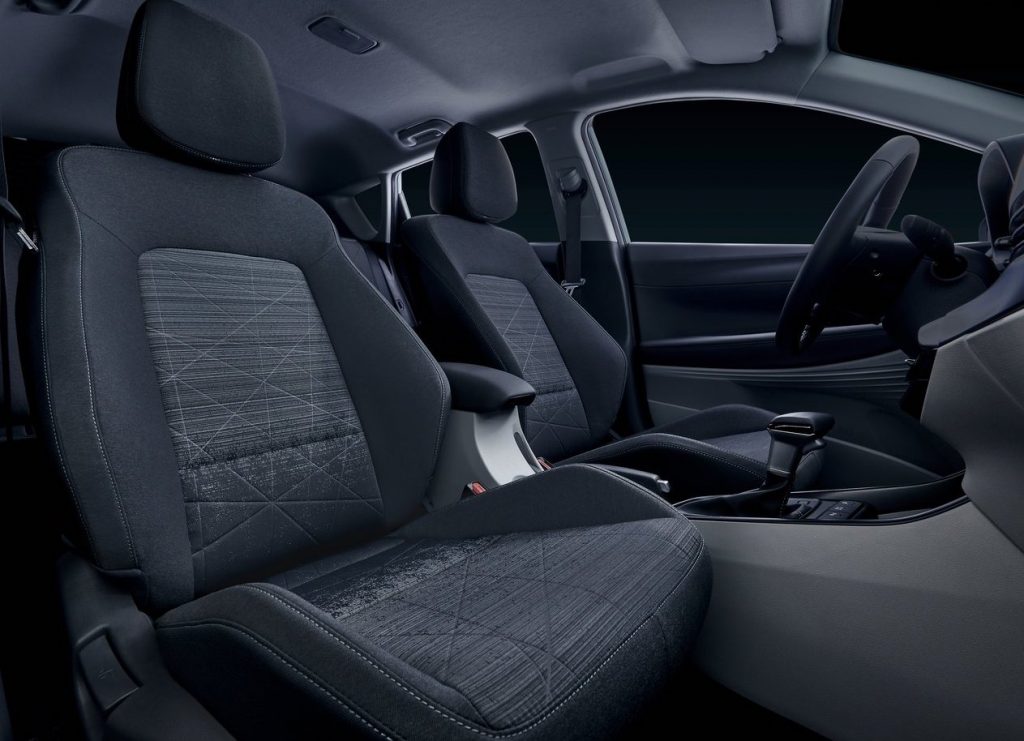
Thus far, prices for this upcoming Bayon has yet to be officially announced, with more details supposedly coming along when this subcompact crossover hits European dealerships in the middle of this year. What is however largely certain is that the chances of this little Hyundai ever making it over here are slim to say the least.
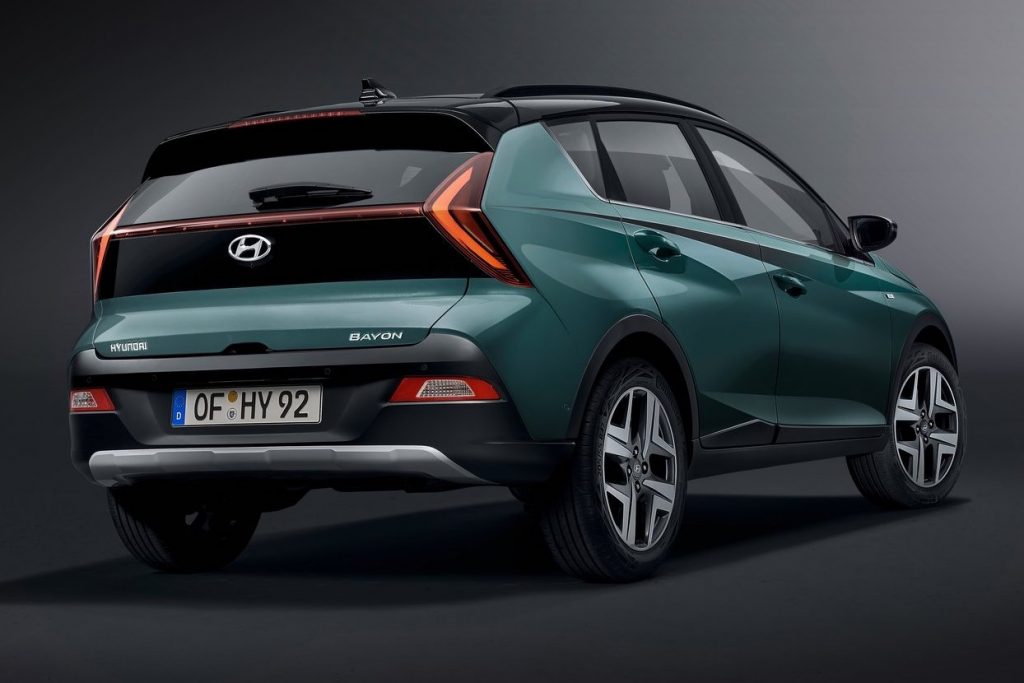
PRESS RELEASE: Hyundai Motor revealed Hyundai BAYON today, an all-new crossover SUV designed specifically for Europe. As a B-segment SUV, BAYON will be the latest and smallest member of Hyundai’s expanding SUV family.
The all-new BAYON features a compact exterior, a roomy interior, and a long list of intelligent safety and connectivity features which make it stand out in its segment. With this, the all-new BAYON democratises technology, making high-tech safety and connectivity features accessible for all.
In line with Hyundai’s existing SUV naming strategy, BAYON’s name was inspired by a vacation hotspot: Bayonne, the capital of the French Basque Country and one of the most beautiful destinations in the south-west of France. As BAYON is designed to meet the demands of the European market, the company decided to give it a European name.
“As the SUV body type continues growing in popularity throughout the world, Hyundai saw a demand for a model capable of navigating European cities while at the same time providing enough space to meet customers’ needs,” says Andreas-Christoph Hofmann, Vice President of Marketing & Product at Hyundai Motor Europe. “Class-leading connectivity and safety features, a sharp and distinctive design, and the integration of Hyundai’s signature 48-volt mild hybrid technology make BAYON stand out in its segment.”
With BAYON, Hyundai has now launched or enhanced seven new models in just 12 months – or 20, counting all body types and powertrain variations making 2020 a record year for its fleet expansion.
A sharp and distinctive design
BAYON is the latest design statement within the Hyundai SUV family, distinctive through unexpected and eye-catching proportions and strong graphic features. Furthermore, it encompasses the Hyundai design identity Sensuous Sportiness, defined by the harmony between proportion, architecture, styling and technology. This latest interpretation of Sensuous Sportiness combines emotional values with innovative solutions.
“With its sharp look and integration of Hyundai’s SUV key design elements, BAYON solidifies Hyundai’s SUV design direction,” says Luc Donckerwolke, Chief Creative Officer at Hyundai Motor Group. “BAYON’s unique and confident look, embodied in its strong lines and arrow-shaped lights, is expected to establish it as the most unique, outstanding entry in the thriving European B-segment SUV segment.”
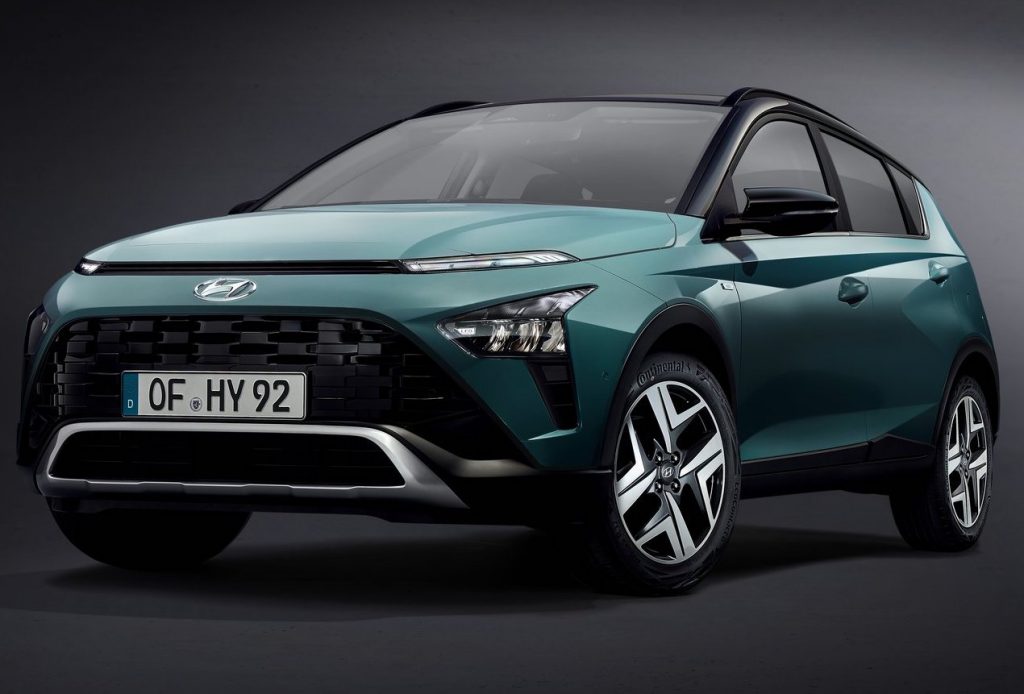
Exterior design
BAYON is characterised by a distinctive exterior design that separates it clearly from its competition. Unique design solutions, high-tech looking details and a clean look elevate it from the crowd.
At the front, a wide grille opens at the bottom, creating a solid stance. Three-part main lights combined with air intakes establish a unique look and architecture. A horizontal air intake band and DRLs establish width, and a lower skid plate confirms its SUV identity.
On the side, a dynamic shoulder provides a wedge-shaped appearance. The arrow-shaped C-pillar provides dynamic and unexpected architecture. This, in combination with fender feature and cladding, defines its unique character.
To the rear, arrow-shaped lights underline the pillar dynamics. Their far-out position creates a wide stance. In addition, a thin horizontal line connecting the taillights further emphasises width and connects the rear and the side in one gesture. Angular lines above the rear arch emphasise volume, creating a vivid section. The strong rear section and visually extended rear window initiate a unique and expressive rear design. Full LED lights and indicators complete its modern look.
BAYON is available with 15-inch steel wheels or 16- or 17-inch alloy wheels.
A total of nine exterior colours are available, including a new launch colour, Mangrove Green. An optional two-tone roof in Phantom Black is also available with several exterior colours.
A modern, digital interior
BAYON features a clean, roomy, well-lit interior. There is a strong focus on maximising front and rear passenger comfort and increasing boot space. The interior is defined by a range of connectivity equipment, including a 10.25-inch digital cluster and a 10.25-inch AVN or 8-inch Display Audio. Occupants can benefit from LED ambient lighting technology integrated into the front passenger foot areas, door wells, and front door pull handle areas, as well as the storage area below the centre console.
A carefully-selected neutral range of interior colours and materials provides maximum compatibility with the exterior colour range. A calm colour and trim concept with small and subtle accents creates a serene atmosphere which allows the driver to focus. BAYON comes standard with a Full Black cloth interior, with two other optional colour combinations available.
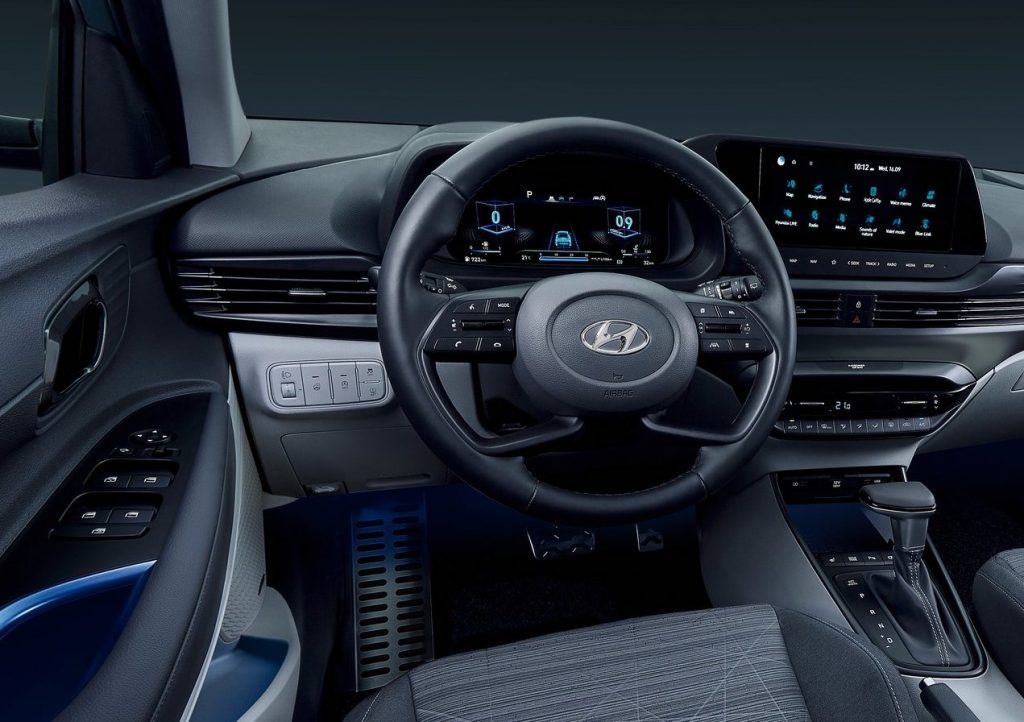
Class-leading connectivity and technology
As with other Hyundai models, BAYON offers advanced connectivity technology rarely found in its segment. It offers a best-in-class digital cockpit and top-line infotainment features.
Passengers can choose between a 10.25-inch AVN screen or an 8-inch Display Audio. The 8-inch Display Audio includes wireless Apple CarPlay and Android Auto.
Two USB ports for the front passengers and one for the rear make it possible for up to three devices to charge simultaneously. One of the front ports also allows data transfer, enabling occupants to connect their phone to the vehicle’s infotainment system. A premium Bose sound system completes the package, promising occupants a high-quality listening experience.
Hyundai Bluelink Connected Car services
In addition, BAYON is equipped with the latest Hyundai Bluelink upgrade, meaning users can benefit from state-of-the-art Connected Car Services. The latest Bluelink includes services such as Connected Routing and a new User Profile feature. New to this generation of Bluelink is Calendar Integration. This means the driver can mirror their Google or Apple calendar in the vehicle’s infotainment system. If the calendar appointment also has an address, it can be imported directly into the vehicle’s navigation system.
In addition, customers can locate, lock and unlock their car remotely using the Bluelink app, or check vehicle information such as maintenance required or fuel levels.
Roominess & Convenience
Hyundai BAYON delivers the comfort and storage space of an SUV with the agility and fuel efficiency of a B-segment vehicle. Its compact exterior size and its family-friendly interior mean customers can enjoy the best of both worlds: while its compact size and excellent visibility make it easy to enter and easy to handle, it also offers that safe and robust feeling customers have come to expect from Hyundai SUVs thanks to its high seating position.
With 411 litres of boot space, BAYON stands out for its large amount of storage space, despite its compact size. As such, BAYON stands out for its roominess and usability. An intelligent trunk cover which can be slid along the rear of the back seat to cover the cargo brings an added benefit.
At 4,180mm long, 1,775mm wide, and 1,490mm tall (or 1,500mm with 17-inch wheels), its dimensions strike a perfect balance between compactness and convenience. It features a wheel base of 2,580mm. Excellent legroom will also ensure passengers experience a comfortable ride, whether they’re sitting in the front seats or in the rear: front passengers can enjoy 1,072mm of leg room, while rear passengers have 882mm.
As a true SUV, BAYON offers a ground clearance of up to 183 mm (in combination with 17’’ wheels), higher than most other vehicles in the B-segment.

A best-in-class safety package
BAYON shares its safe and robust DNA with the other members of the Hyundai SUV family, and it has the safety features to match. Another way it stands out in its segment, BAYON offers an extensive list of Hyundai SmartSense safety features. Many of them are included in the standard equipment already.
A number of semi-autonomous driving features set BAYON apart from its competitors. Lane Following Assist (LFA) works to keep the vehicle centred in its lane. Forward Collision-Avoidance Assist (FCA) first sounds an alarm, then, if necessary, applies the brakes to prevent a collision from occurring. This feature includes car, pedestrian and cyclist detection, as well as Junction Turning, which can apply the brakes to prevent a collision with an oncoming car when turning left at an intersection. Another advanced feature, Navigation-based Smart Cruise Control (NSCC), uses data from the vehicle’s navigation system to adjust speed autonomously when driving on a highway or expressway.
BAYON also includes several features that gently redirect the driver’s attention when their focus slips. Driver Attention Warning (DAW) analyses driving patterns to help detect drowsy or distracted driving. This system works in tandem with Leading Vehicle Departure Alert (LVDA), which alerts the driver when the vehicle ahead of them starts moving forward and they do not react quickly enough. In addition, Rear Occupant Alert (ROA) notifies the driver before leaving the vehicle if sensors detect movement in the back seat. This makes BAYON even safer for rear passengers, including children or pets, making it a great choice for families.
Still other features ensure safety when driving at low speeds, or when parking. Parking Collision-Avoidance Assist-Reverse (PCA-R) provides a warning and, if necessary, applies the brakes when a rear obstacle is detected when the car is reversing slowly. Rear Cross-Traffic Collision-Avoidance Assist (RCCA) assists drivers in a similar manner when they are backing out of a parking space and another car passes by. And Parking Assist (PA) allows for semi-autonomous parking, with a range of sensors and software working together to help drivers get into tight spaces.
In case of an accident, eCall will automatically alert emergency services if the vehicle’s airbags are deployed. Alternatively, occupants can also activate this feature with the press of a button.
Available SmartSense safety features:
- Lane Keeping Assist (LKA)
- Lane Following Assist (LFA)
- Navigation-based Smart Cruise Control (NSCC)
- Intelligent Speed Limit Assist (ISLA)
- High Beam Assist (HBA)
- Forward Collision-Avoidance Assist (FCA) with pedestrian and cyclist detection and Junction Turning
- Driver Attention Warning (DAW)
- Leading Vehicle Departure Alert (LVDA)
- Rear Occupant Alert (ROA)
- Blind-Spot Collision Warning (BCW)
- Blind-Spot Collision-Avoidance Assist (BCA)
- Parking Collision-Avoidance Assist-Reverse (PCA-R)
- Rear Cross-Traffic Collision-Avoidance Warning (RCCW)
- Rear Cross-Traffic Collision-Avoidance Assist (RCCA)
- Parking Assist (PA)
Powertrains
BAYON boasts excellent fuel efficiency and highly competitive CO2 emissions ranking thanks to an updated Kappa engine family. The T-GDi is a downsized turbo-charged engine with direct injection for optimum efficiency. When combined with Hyundai’s unique 48-volt mild hybrid technology (48V) with intelligent Manual Transmission (iMT), this results in even more enhanced fuel savings and efficiency.
iMT disengages the engine from the transmission when the driver releases the accelerator. This allows the vehicle to start coasting, reducing emissions and saving fuel. There are two different coasting levels associated with iMT: first, when the engine is idle, and second, when the engine is turned completely off. The engine is restarted again as soon as the driver presses either the brake or the accelerator pedal, and starts running again in the same gear as when it was switched off. This results in better fuel efficiency with no compromises on performance.
BAYON also features Hyundai’s unique Continuously Variable Valve Duration (CVVD) technology, which regulates the duration of the valve opening and closing according to driving conditions. This optimises engine performance while also improving fuel efficiency, resulting in reduced emissions and saving fuel.
At the top of the line-up is a 1.0-litre T-GDi engine with 48V and 120 or 100 PS. This can be coupled with the 6-speed intelligent Manual Transmission (6iMT) or a 7-speed dual clutch transmission (7DCT).
The 100 PS version of the 1.0-litre T-GDi is also available without 48V and can be paired with a 6-speed manual transmission (6MT) or 7DCT.
The 1.0-litre T-GDi engine with and without 48V also comes with three drive modes to optimise the engine response and steering performance based on driving conditions. These are Eco, Normal and Sport.
A 1.2-litre MPi engine with 84 PS paired with 5MT is available as well.
BAYON is the first Hyundai SUV to come equipped with Rev Matching, a feature usually reserved for Hyundai’s high-performance models. Rev matching synchronises the engine to the output shaft, allowing for smoother or sportier downshifts. It will be available for the 1.0-litre T-GDi engine when paired with the 7DCT for all drive modes, and for the 1.0-litre T-GDi engine with 48V when paired with the 6iMT in Sport mode.


